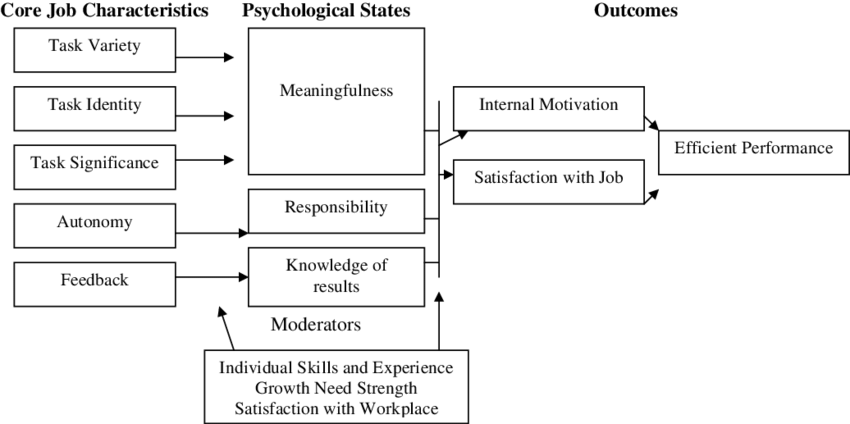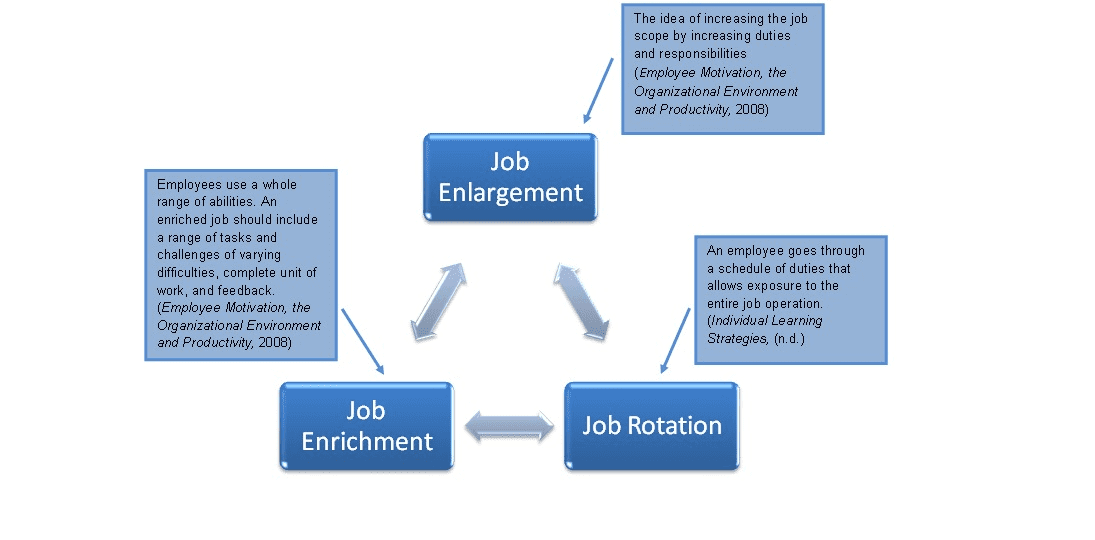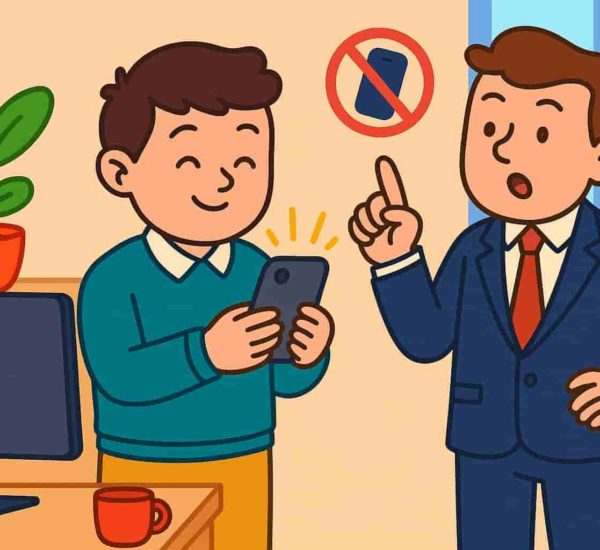In an increasingly complex and dynamic world, organizations need to treat their employees as valued assets to succeed. Employees need to constantly build new skills, be versatile, and handle work pressure well. To achieve these lofty goals, employers need to understand what drives them and how they can be motivated to go the extra mile.
Job design can be used to improve employee motivation, maximize performance, and provide value to the organization.
What is Job Design?
The human approach of job design states that jobs design should keep employees at the core and not organizational processes. It should focus on the satisfaction of employees so that they are more productive. This approach of work design says that jobs should be challenging, interesting, and rewarding. It seeks to satisfy a person’s need for recognition, respect, fulfillment, and growth.
Job Design Examples
Providing flexible work hours to employees, creating a job profile with a variety of skills, and promoting the thoughts and ideas of employees are a few examples. Job Design is not restrictive and relates to many aspects that management and HR need to ensure that employees are performing to their and providing value to the organization.
Contemporary Approaches to Job Design
Human Approach
The human approach of job design states that jobs should be designed keeping in mind the employees and not organizational processes. It emphasizes the satisfaction of employees so that they are more productive. This approach of work design says that jobs should be challenging, interesting, and rewarding. The human approach seeks to satisfy a person’s need for recognition, respect, fulfillment, and growth.
Engineering Approach
The engineering approach of job design relies on the scientific principles of management developed by FW Taylor. This approach might have been great for traditional industries. However, things have changed dramatically since Taylor’s time, and modern approaches are more suitable for today’s world.
According to this approach, the management/HR should decide the task one day before and send the same to the employees. The job description should contain what, how, and when of the task to be performed.
Job Characteristics Approach
Used widely, Hackman and Oldham developed the contemporary approach to job design in 1980. According to the duo, to motivate an individual, every job needs to have five core characteristics. These characteristics are:
Skill Variety
Jobs that need a variety of skills are more challenging and require more from an employee. A job that needs different skills enhances the ability of an employee and keeps them challenged.
Task Identity
Task identity is the degree of work allotted to an employee. Enlarged job responsibility is much more fulfilling than a skeleton list.
Task Significance
Task significance consists of two things:
- Internal significance (how much the job contributes to the company);
- External significance (how proud the employees are talking about their job to their friends, family, and relatives).
Autonomy
Autonomy means job independence. The amount of freedom and independence an employee possesses contributes to their job satisfaction.
Feedback
Information received from supervisors or managers about the performance of an employee adds to job satisfaction too.

Hackman and Oldham followed the job characteristics by providing psychological states, which are:
- Experienced Meaningfulness
- Experienced Responsibility
- Knowledge of Results
The duo’s model offers weightage to autonomy and feedback. Employees seeking higher job growth are more likely to respond positively to enriching jobs than others.
Companies following these characteristics will see an increase in productivity and a reduction in absenteeism and employee turnover.
Job Motivating Potential
Employees are much more likely to perform to the best of their abilities if they like their job. Companies try a wide range of things to motivate their employees. However, it may be futile if the work design itself is ineffective.
Hackman and Oldham proposed a Job Diagnostic Survey (JDS) that calculates the measure of job enrichment. It involves calculating the Motivating Potential Score (MPS). The formula is:
MPS = (Skill variety + task variety + task significance)/ autonomy x feedback.
The JDS measures additional aspects of a job such as feedback from others, job meaningfulness, general satisfaction, growth satisfaction, pay satisfaction, etc. MPS scores range from 1 to 343. The average score is estimately around 125.
Motivating Employees’ Performance
The internal factors of an organization play a crucial role in motivating employees and improving their performance. HR needs to create a healthy and motivating environment for all employees. To develop job design tools, HR and management need to look at the following points:
-
Handling of Employees
You should plan well for the work design process. Recruit employees by keeping in mind their abilities, skills, personalities, among other factors. After hiring, train the employees so that they are in a position to do their job efficiently. Additionally, include a bit of flexibility in the job description as the world is dynamic and employees have to learn new things regularly. Reward employees who perform well with more responsibilities and recognition.
-
Flexibility
Managers need to ensure that they provide flexible work hours, telecommuting, and job sharing. The upper level needs to encourage employees to share their thoughts and ideas for fresh perspectives and insights. Additionally, they should help in strategy making and decision-making.
-
Ergonomics
One vital aspect of job design is ergonomics. Employees must be safe from diseases, disorders, and ailments to perform their jobs well. Managers need to ensure that they are cultivating a safe and hazard-free environment. Tools and equipment should emphasize safety. Additionally, they should ensure that employees get coffee breaks and other breaks so that they are not overworked. Lastly, the involvement of workers and unions is essential when deciding how work is organized and structured.
-
Leadership Style
Leaders play a massive role in motivating employees. Leaders that are benevolent, fair, and trustworthy become a source of trust for employees. Great leaders persuade employees to follow the participative form of work where employees are responsible for the performance and enjoy freedom and work autonomy.
Theories of Job Design
There are mainly three theories of work design:
Classical Theory
The classical theory propounded by Max Weber and Henri Fayol states that an organization can achieve efficiency by division of labor. Managers need to identify the purposes of the organization. Then, they have to divide jobs in such a manner that it achieves the organizational goals. The purpose should be divided into jobs, with each job contributing something to the whole. Lastly, a supervisor is assigned to oversee the work and report the same to their superiors.
Behavioral Theory
The behavioral theory is quite different from the classical theory. It is not much concerned with allocating specific responsibilities to specific jobs. Behaviorists prefer simple organizational structures, a decentralized mechanism of decision-making, and informal departments. They do not like rigidity in the organization. Work Design based on this theory advocates creating flexible jobs with employees participating in decision-making and contributing effectively.
Situational Theory
The situational theory emphasizes the external environment while fixing tasks, responsibilities, and roles to jobs. You need to create a structure keeping in mind the company type, market, research, and other factors.
Job Design Strategies
Employees need to feel a sense of accomplishment in the work they do. They need to believe that they are rendering value, and it is equally essential that they get the freedom to do so. The job design theory of motivation says that a job is designed to provide an employee with job relevance, enlargement, and enrichment.
Relevance
Job relevance is not just for the CEOs, CFOs, or senior executives. All employees need a sense of relevance in the job they do. They do not want to be just another cog in the wheel. Standard and routine tasks are necessary in every field but can get tedious at times. Jobs should be designed in such a way that an employee does not feel alienated.
Enlargement
Job enlargement helps in overcoming the problem of alienation. Enlarging the task an employee performs creates a sense of fulfillment for an employee. An employee would get much more out of performing a task if he is in charge of a significant part of it. In the age of specialization, employees might not get something out of a task if they perform just one perspective of it.
Practical examples of Job Enlargement
Here are a few examples of job extension:
Example 1
A multinational company had a communications team for its operations worldwide to oversee the implementation of digital tools. However, the company noticed that the adoption of digital tools remained low.
The communication did not always conform to the functionalities of the tools. The company resolved this issue by enlarging the role of the communications team. They involved them in conversations during tool development and took their expertise while designing. With their involvement, the exact purpose and functionalities of the tools came into the front, and communicating the same to the target audience became easier. Therefore, job designing in management is vital for the organization.
Example 2
Suppose that a law firm has a team working on a case. Every person on the team has a specific task and their role is restricted to that. In this, they may not be able to feel that they are providing value. Additionally, they might not be able to see the big picture. If the law firm applies a more hands-on approach and increases the role of people in the team, it might see an increase in productivity as well as a sense of fulfillment.
Frederick Herzberg once said, “If you want people to do a good job, give them a good job to do”. Herzberg believed that companies can boost employee satisfaction by adding different tasks to their job to make employees feel valued. A job needs to be designed in such a manner that it utilizes the employee’s potential and provides them with challenges too. Moreover, an expansion in the ability of an employee should be rewarded with increased responsibilities and rewards.

Process of Job Design and Job Description
The process of work design is as follows:
Specification of Individual Tasks
First, you need to identify the tasks to perform. Based on individual abilities, skills, and nature of tasks, classify them. The factors taken into account are the interdependence of tasks, their relationship with each other, the complexity of tasks, etc. To make this step easier, simplify the individual task.
Combining Tasks into Jobs
A particular job is the combination of tasks that need to be performed and are similar in terms of skills, roles, and responsibilities. During this step, you need to assign groups of jobs to the respective department.
Specification of Methods
After the above two steps, you need to identify specific methods to perform the jobs you have designed. This step ensures that employees get a basic blueprint of how they should do their job. It also helps in doing the jobs uniformly.
Conclusion
In a dynamic world, job design becomes an essential tool for organizations to compete and survive. Considering the advancements in management theories, management and HR need to employ novel ideas to maximize performance and create value while designing jobs.





